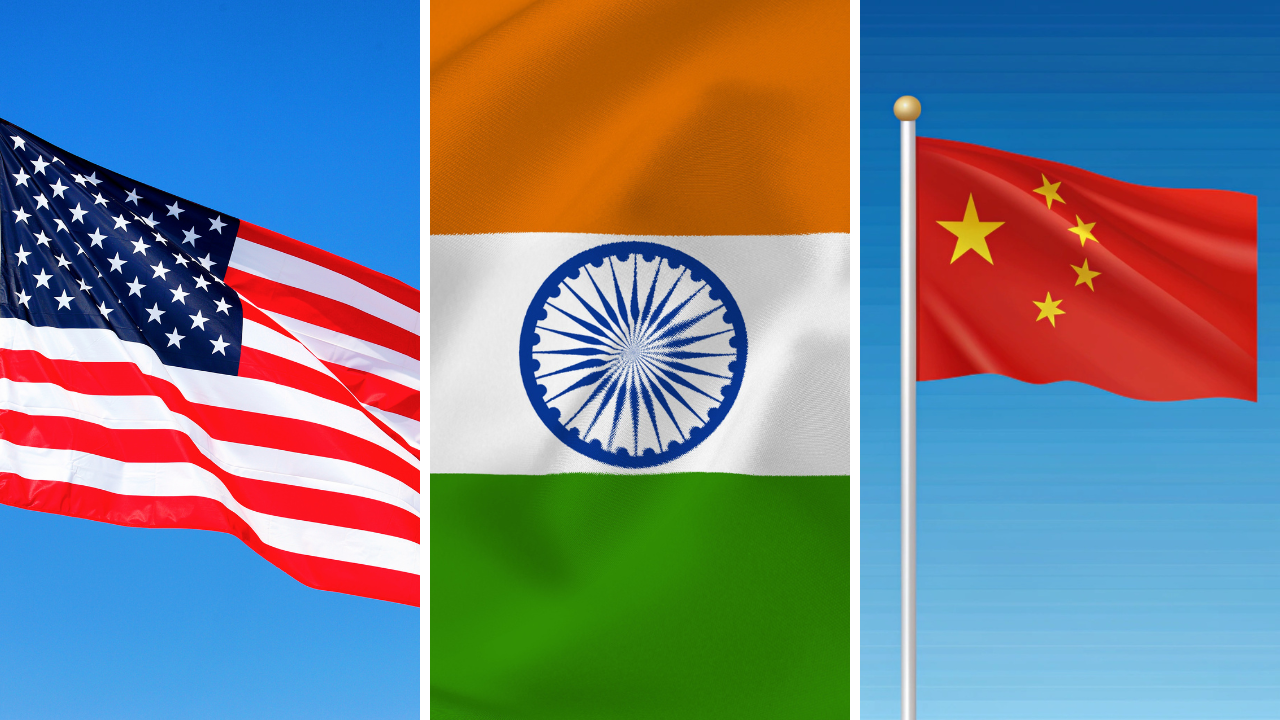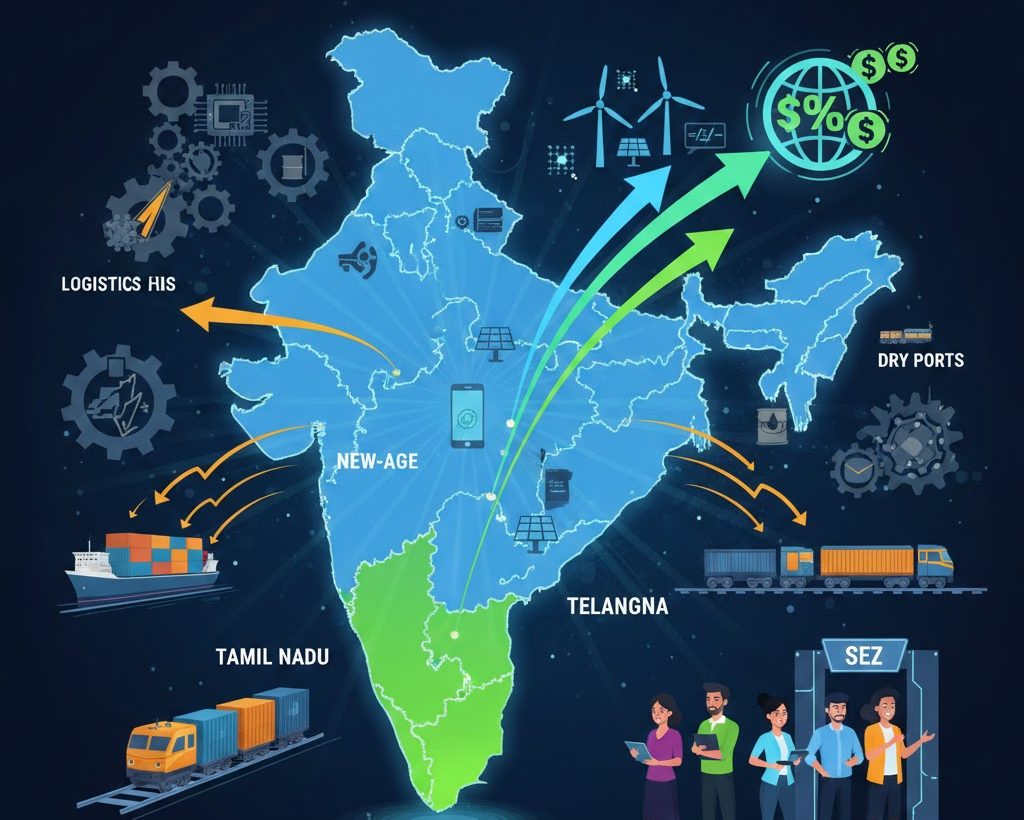Navigating the Triangle: US-India Cooperation and China’s Strategic Response in 2025
Introduction
The deepening strategic and economic partnership between the United States and India has become a defining feature of global geopolitics. Rooted in foundational agreements like the Civil Nuclear Deal and the Defence Cooperation Framework, this partnership has expanded to include advanced technological collaborations and robust military cooperation. The rise of China as an assertive power, particularly in the Indo-Pacific, has catalysed these developments. Beijing’s policies, such as the Belt and Road Initiative (BRI) and its actions in the South China Sea, have driven the US and India to align more closely. This essay explores the evolving triangular dynamics between the US, India, and China in 2025, focusing on how Beijing has adapted its strategies to navigate this complex geopolitical landscape.
The Role of Trump’s Second Administration
President Donald Trump’s second term has brought US-India relations to unprecedented heights. Indian External Affairs Minister S. Jaishankar’s attendance at Trump’s inauguration symbolised the strengthened partnership. Key discussions with Senator Marco Rubio and other US officials underscored India’s critical role in countering China’s influence. Defence agreements, such as COMCASA and BECA, have significantly enhanced India’s military capabilities and interoperability with US forces.
Economic collaboration has also deepened under the Indo-Pacific Economic Framework (IPEF), which emphasises resilient supply chains and reduced dependence on Chinese manufacturing. Trump’s administration has prioritised India as a counterweight to China in the Indo-Pacific strategy, aligning with New Delhi’s ambitions for regional leadership. However, China has responded with diplomatic and strategic measures to mitigate the impact of these developments.
China’s Diplomatic Outreach
Since Jake Sullivan’s visit to India in January 2025 and the initial signals from Trump’s administration about the US-China-India triangular relationship, China has intensified its diplomatic efforts. In a historic gesture, Vice-President Han Zheng attended Trump’s inauguration, signalling Beijing’s willingness to improve ties with Washington. Simultaneously, China has pursued closer engagement with India, reflected in senior diplomat Vikram Misri’s visit to Beijing, aimed at addressing bilateral tensions and exploring shared economic interests.
China has also leveraged multilateral platforms like the Shanghai Cooperation Organization (SCO) to maintain dialogue with India and other regional powers. By emphasising cooperation on issues like counterterrorism and regional stability, Beijing seeks to offset the strengthening US-India alliance. These diplomatic overtures highlight China’s recognition of the importance of maintaining stable ties with India amid shifting geopolitical dynamics.
Strategic Vigilance Amidst Growing US-India Cooperation
While pursuing diplomacy, China remains strategically vigilant about the deepening US-India partnership. Chinese analysts view India’s alignment with the US as an effort to position itself as an alternative to China in global supply chains, particularly under Trump’s “Made in America” policies. China has expressed concerns over joint military exercises like Malabar and technological collaborations such as semiconductor development, perceiving them as direct challenges to its strategic and economic interests.
Beijing is also wary of the US-India focus on critical technologies, such as artificial intelligence and 5G. These collaborations aim to reduce reliance on Chinese supply chains and undermine Beijing’s “Made in China 2025” ambitions. Additionally, China is closely monitoring potential trade realignments, particularly as Trump has hinted at imposing tariffs on countries he deems “tremendous tariff-makers,” including India.
China’s Regional Assertiveness
Despite its diplomatic overtures, China has maintained its assertiveness in the Indo-Pacific. Concerns persist in India regarding Beijing’s plans to construct a major hydroelectric dam on the Yarlung Zangbo River, potentially affecting water resources in India and Bangladesh. China’s continued military presence in the Indian Ocean and its activities along disputed border areas reflect its determination to safeguard its regional influence.
To counterbalance the growing US-India alignment, China has also intensified its promotion of the Belt and Road Initiative (BRI). By expanding infrastructure investments and fostering economic ties with smaller nations, Beijing aims to consolidate its leadership in the region and challenge US-led initiatives like the IPEF.
India’s Balancing Act
India’s growing partnership with the US presents opportunities and challenges. On one hand, the alliance strengthens India’s defence capabilities, technological expertise, and global standing. On the other, it raises concerns about maintaining strategic autonomy—a key principle of India’s foreign policy. New Delhi must navigate this partnership carefully to avoid alienating other key partners, such as Russia and China.
Economically, the US-India alignment offers an alternative to Chinese capital and technology. However, Beijing remains a critical economic partner for India, particularly in trade and investment. Balancing these relationships will require strategic foresight as India seeks to leverage its partnerships to achieve its regional and global ambitions.
China’s Economic and Technological Adaptations
To address the changing dynamics, China has adapted its economic strategies. Beijing is reassessing its approach to global supply chains, aiming to maintain its competitive edge in sectors like manufacturing and technology. Chinese leaders are likely to intensify investments in critical technologies, such as semiconductors and artificial intelligence, to counter the US-India partnership’s advancements in these areas.
At the same time, China is closely monitoring the Indo-Pacific Economic Framework’s progress. Efforts to present the BRI as a more attractive alternative to regional nations demonstrate Beijing’s commitment to safeguarding its economic influence. These moves reflect China’s strategic adaptability in the face of evolving triangular dynamics.
The Quad and Multilateral Engagement
The Quadrilateral Security Dialogue (Quad), comprising the US, India, Japan, and Australia, has become a cornerstone of Indo-Pacific security cooperation. Its emphasis on a free and open Indo-Pacific aligns with India’s strategic priorities and strengthens its position in the region. The Quad addresses shared challenges, such as maritime security, infrastructure development, and climate change, while countering China’s unilateral actions.
China has been critical of the Quad, perceiving it as an anti-China coalition. Nevertheless, Beijing continues to engage with multilateral platforms like the SCO to maintain dialogue with regional powers and counterbalance the Quad’s influence. This dual approach underscores China’s efforts to assert its leadership while managing its relationships with key stakeholders.
Conclusion
The triangular dynamics between the US, India, and China in 2025 highlight the complexity of contemporary geopolitics. The US-India partnership, strengthened under Trump’s second administration, reflects a convergence of shared goals in addressing China’s assertiveness, fostering economic resilience, and advancing technological innovation. However, this alignment poses challenges for Beijing, prompting it to adapt its strategies through diplomatic outreach, regional assertiveness, and economic recalibrations.
For India, balancing its ties with the US while maintaining relationships with China and other partners will be critical. As these dynamics continue to evolve, the interplay between cooperation and competition will shape the future of the Indo-Pacific and global order. This delicate balance underscores the importance of strategic foresight and collaboration in navigating an increasingly multipolar world.
Subscribe to our Youtube Channel for more Valuable Content – TheStudyias
Download the App to Subscribe to our Courses – Thestudyias
The Source’s Authority and Ownership of the Article is Claimed By THE STUDY IAS BY MANIKANT SINGH



